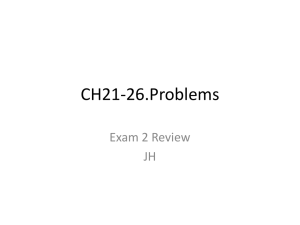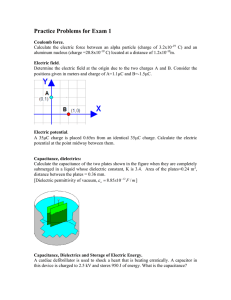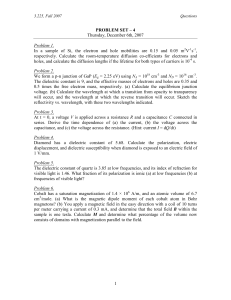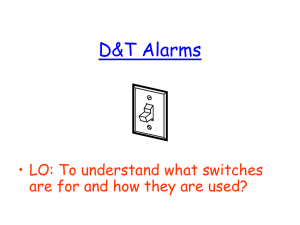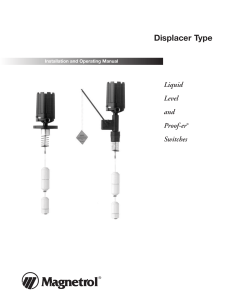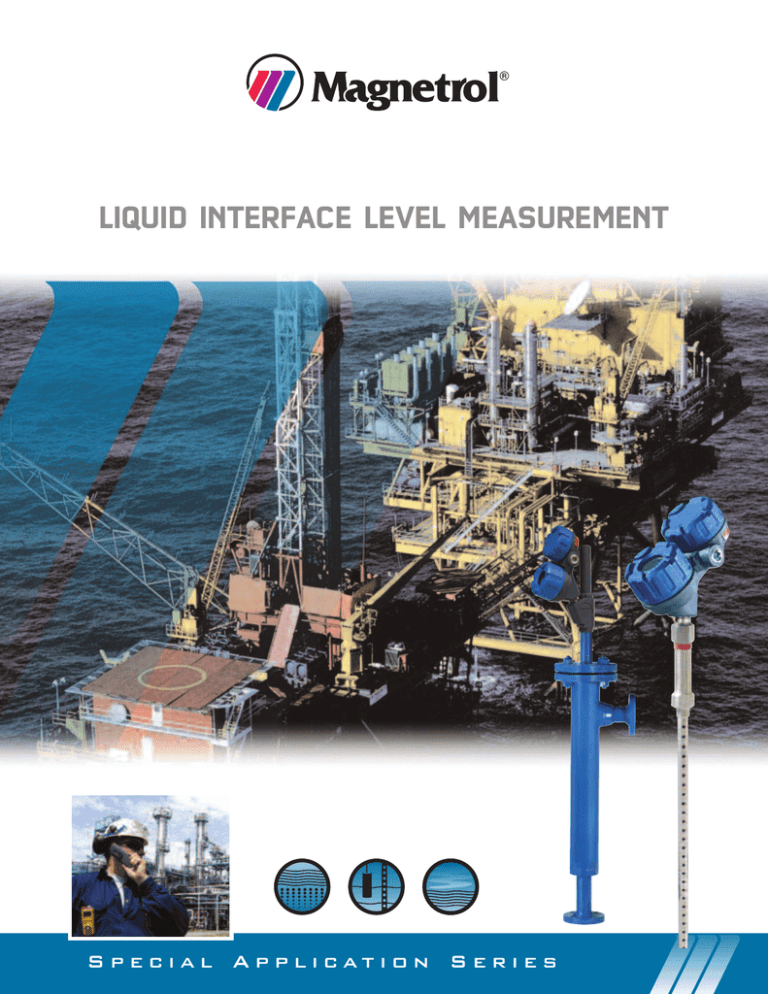
LIQUID INTERFACE LEVEL MEASUREMENT
S p e c i a l A p p l i cat i o n S e r i e s
2
The Need
for Interface
Measurement
T
I N T E R FA C E 1 0 1
he need for interface measurement arises
whenever immiscible liquids–those incapable
of mixing—reside within the same vessel.
The lighter material rises to the top and the heavier
material settles at the bottom. In oil production,
for example, water or steam is used to extract oil
from a well. Well fluids then route to production
separators where they settle into their primary
constituent parts as a water-hydrocarbon interface.
Water may also be used as a transport medium or
a cleaning agent and forms an interface with an
allied material which is later extracted.
Interfaces are most commonly found in the
diverse separation processes that are essential to
every industry. Separation recovers additives, catalysts or solvents, extracts impurities, and routes
media into different processing channels.
Though our emphasis is on liquid/liquid interface, interfaces also form between liquid and solids,
liquid and foam, or liquid and a gas—such as gases
(other than air) that are used in tank blanketing.
Immiscible liquids meet along an interface layer
The
Emulsion
Layer
Interface
Measurement
Technology
where they undergo some amount of emulsification. This emulsion layer (also called a rag layer)
may form a narrow and precise boundary; but
more frequently it is a broader gradient of mixed
liquids—or liquids mixed with particles that form
a slurry. Generally, the thicker the emulsion layer,
the greater will be the measurement challenge.
Knowing the position of a process interface
is necessary for maintaining product quality and
operations efficiency. The interface is measured
and controlled by precision level switches and
transmitters. Though at least 20 different types of
liquid level measurement devices are in service
today, only a very few are suitable for accurate and
reliable interface measurement.
The five leading interface measurement technologies in use today are discussed in the pages
ahead. Grouped by their operating technologies,
these include Buoyancy (Floats and Displacers),
RF Capacitance, Thermal Dispersion, Radar, and
Redundant Technologies (those combining two
measurement technologies in one instrument). Principal Applications
Petroleum and Gas
• Separators
• LPG Dehydrators
• Heater Treaters
• Crude Desalters
• Free-water Knock-out
• Regenerators
• Coalescers
• Crude Dewatering
• Acid Settling Tanks
• Alkylation Tanks
• Coking Drums
Other Industrial
• Liquid Oxygen and
Nitrogen production
• Digester Vessels
• Extractors & Separators
• Grease Traps
• Pulp and Paper
• Mining and Quarrying
• Food and Beverage
• BioPharmaceutical
• Chemical Plants
• Storage Facilities
Water & Wastewater
• Settlement Tanks
• Clarifiers
• Sludge Thickeners
• Filtration Systems
• Final Effluent Monitoring
Types of Interface
Liquid/Liquid Interface
• The liquid/liquid interface—
including classic oil/water
products—is found in separation, purification, catalysis,
extraction and other processes.
Liquid/Solids Interface
• These interfaces are common
in Water and Wastewater
Treatment, Pulp and Paper,
Mining and Quarrying, and
Chemical Processing.
Foam/Liquid Interface
• Interface detection between
immiscible fluids can be
calibrated in some controls to
alarm when the liquid changes
to foam.
Vapor/Liquid Interface
• The phase change of a vapor
to a liquid is detected in
storage tanks, tank cars and
process systems. Interfaces
between vapor and foam can
also be detected.
FLOAT & DISPLACER
I N T E R FA C E
Float Switches
Displacer Switches
MEASUREMENT PRINCIPLE:
A float calibrated for interface
service must be heavy enough to
penetrate the upper liquid yet
buoyant enough to float on the
lower liquid.
MEASUREMENT PRINCIPLE:
PROCESS CAPABILITIES:
Max Pressure:
3000 psig @ +697° F
Min Pressure: Full Vacuum
Max Temperature: +1200° F
Min Temperature: -150° F
Sensitivities: 0.1 is the minimum difference allowable
between the S.G.s of the upper
and lower liquids. As S.G. difference approaches this limit, very
large floats are required.
Interface level movement changes
the buoyancy force on a displacer
suspended from a range spring.
The force change on the spring
causes it to extend or compress,
moving an attraction sleeve into
or out of the field of the switch
magnet, actuating the switch.
PROCESS CAPABILITIES:
INSTRUMENT OPTIONS: Float-
type switches available for top,
side mounting, and external
cage applications. A wide range
of mercury, dry contact, hermetically sealed, pneumatic and
vibration-resistant switch mechanisms are offered.
3
TECHNOLOGY
The Tuffy® side-mount, float-type switch is compact
and economical. A simple and reliable T20 topmount switch. One of Magnetrol’s many float or
displacer, external cage switches. Displacement-type
controls are well-suited for simple or complex interface
applications.
Max Pressure:
5000 psig @ +300° F
Min Pressure: Full Vacuum
Max Temperature:
+500° F @ 2665 psig
Min Temperature: -150° F
Sensitivities: Wider deadbands
than float; entire displacer must
be submerged in interface service.
INSTRUMENT OPTIONS:
Top-mounting displacer switch
options include electric or pneumatic switch mechanisms and
enclosures; Proof-er® ground
check; and a wide range of connections.
Displacer Controllers & Transmitters
MEASUREMENT PRINCIPLE:
Movement of the interface level along the length
of the displacer causes the precision range spring
to extend or compress. This causes the movement
of the core within a linear variable differential
transformer in the electronic Modulevel® resulting
in a digital or analog output. In the Pneumatic
Modulevel, this causes the movement of a magnetic
ball which guides the magnet carriage resulting in
a pneumatic output change.
INTERFACE MEASUREMENT:
This technology is widely used for interface service
because it is unaffected by emulsions and will accurately track the middle of the emulsion layer.
PROCESS CAPABILITIES (Electronic Models):
Steam Applications:
–20° F to +500° F
Non-Steam Applications: –20° F to +600° F
(with carbon steel chambers)
Process Pressure: Up to 5100 psig @ +100° F
Modulevel
Far Left: Shown with
cutaway views to reveal
the position of its range
spring and displacer,
Pneumatic Modulevel
controllers offer high
reliability in temperature and pressure
extremes.
Near Left: E3 Modulevel
electronic transmitters
offer advanced interface
control in digital or analog versions.
RF CAPACITANCE
4
I N T E R FA C E
TECHNOLOGY
RF TECHNOLOGY:
KOTRON® RF (Radio Frequency)
Capacitance-type electronic controls offer
many interface measurement advantages:
• Up to 150-foot measurement range
• Conductive and non-conductive liquids
• Corrosive and abrasive media resistance
• Extensive sensor probe selection
• No moving parts—Maintenance free!
AIR:
PUMP ON
OIL:
ε=1
ε=2.1
Emulsion:
RF MEASUREMENT PRINCIPLE:
As media rise and fall inside a tank, the
amount of capacitance developed between
the sensing probe and the ground reference
rises and falls. In RF switches, this change
is sensed by the electronics and converted
into a relay operation. In RF transmitters,
the electronics convert the capacitance
change into a continuous level measurement.
RF INTERFACE MEASUREMENT:
The dielectric constant (ε) of the process
medium is critically important. The higher
the difference between the dielectric constants of the process material and the area of
the two layers the easier the interface measurement will be.
RF PROCESS CAPABILITIES:
Max Pressure: 2000 psig @ +100° F
Min Pressure: Full Vacuum
Max Temperature: +400° F @ 200 psig
Min Temperature: -40° F @ 3000 psig
Sensitivities: Variable dielectrics and
conductive coating.
RF SWITCH OPTIONS:
• Single-point and multi-point
• Integral or remote location
• Field selective fail-safe setting
• Intrinsically safe probe circuitry
• Narrow or wide differential
• Easy calibration models
RF TRANSMITTER OPTIONS:
• 4-20 mA, 20-4 mA output
• Integral or remote location
• Self diagnostics
• FM and CSA approvals
• Up to four control relays
• LCD display and keypad options
• Two-wire, 24 VDC, loop-powered
• RS-485 Modbus® communication
• HART® digital communication
• Dual channel operation for two probes
ε=?
PUMP OFF
WATER:
ε=80
WATER OUT
Switches: In the oil and water
interface above, RF Point Switches
provide instantaneous detection
of the dielectric difference
between the two media. The
Model 822 Multi-Point Switch can
use one unit for pump control.
The Model 804 provides pump
control and 4-20 mA output.
Switches
Transmitter: A Capacitance transmitter
will measure total vessel capacitance.
Since water has a high dielectric, most
capacitance is generated by the water.
The dielectric (ε) in the rag layer (red
box) changes from 2.1 to 80. As water
mixed in the oil increases conductivity,
the emulsion layer will appear to be more
like water than oil.
Transmitters
801
811
822
832
842
804
805
082
THERMAL DISPERSION
I N T E R FA C E
5
TECHNOLOGY
TD TECHNOLOGY:
THERMATEL® switches offer a new level
of interface performance and reliability in
thermal dispersion technology (see productspecific features in grey box below right):
• Accurate, fast-responding technology
• Easy, quick calibration
• Not affected by temperature, pressure
or viscosity.
• No moving parts—Maintenance free!
TD MEASUREMENT PRINCIPLE:
Switches using thermal dispersion technology detect heat transfer which reduces the temperature difference between the switch’s two
sensors; one sensor is for reference and the
other is heated to a temperature above the
process temperature. The temperature difference is greatest in air, then decreases when
cooling occurs due to a change in media. The
electronics compare the electrical signal from
the sensor against the set point and provide a
relay actuation.
TD INTERFACE MEASUREMENT:
The Thermatel TD1/TD2 and TG1 switches
have been designed and engineered for level,
flow or interface detection. When used as an
interface detection switch, the set point can
be adjusted to detect the difference in media
between two fluids that have different thermal
conductivity. Water has a very high thermal
conductivity while organic materials (oil) have
a much lower thermal conductivity. Thermatel
detects the difference in media due to the temperature difference which will be greater in the
organic layer than in the oil layer.
Three Interfaces detectable by Thermatel Switches:
Liquid/Liquid Foam/Liquid Vapor/Liquid
Switches
TD1/TD2
TG1
TD PROCESS CAPABILITIES:
Max Pressure: 6000 psig @ +100° F
Min Pressure: Full Vacuum
Max Temperature: +850° F @ 3380 psig
Min Temperature: -100° F @ 6000 psig
Sensitivities: Condensing environments
TD SWITCH OPTIONS:
• Available in explosion-proof version
• Intrinsically safe design
• Available in threaded, flange, sanitary
and adjustable length connections
• Viewable alarm status window
• Integral or remote electronics
• Hot tap retractable probe
FEATURES:
• Continuous diagnostics; fault indication
• Temperature compensated to provide
repeatable alarm under varying temps
• Narrow hysteresis and fast response
FEATURES:
• Two-wire, intrinsically safe circuit
between the probe and the remote
din rail enclosure
• LEDs provide visual indication
• 24 VDC input power
• Non-linear mA output signal for trending,
• Adjustable set point and time delay
diagnostics & repeatable level indication
• Sanitary design option
• NACE construction option
• Window to view alarm status option
• Integral or remote electronics
• SPDT Alarm relay
• mA output signal for diagnostics
and repeatable level indication
• NACE construction option
6
GUIDED WAVE RADAR
I N T E R FA C E
GWR TECHNOLOGY:
An ECLIPSE® Model 705 Guided Wave
Radar (GWR) transmitter is capable of measuring both an upper liquid level and the interface level:
• Two-wire, 24 VDC, loop-powered
• Not effected by changing specific gravity
• Probe-based GWR is subject to less signal
dispersion and attenuation.
• Easy configuration without changing level
• Quick connect/disconnect probe coupling
• No moving parts—Maintenance free!
GWR MEASUREMENT PRINCIPLE:
Eclipse is based on Time Domain Reflectometry. TDR transmits pulses of electromagnetic energy down the wave guide, or probe.
When a pulse reaches a liquid surface that has
a higher dielectric constant than the air in
which it is traveling (dielectric constant of 1),
the pulse is reflected. Ultra high-speed timing
circuitry provides an accurate measure of liquid level. Even after the pulse is reflected from
the upper surface, some of the energy continues along the length of the probe through the
upper liquid. The pulse is again reflected when
it reaches the higher dielectric lower liquid.
GWR INTERFACE MEASUREMENT:
The dielectric constant (ε) of the interface
media is critically important for GWR. As
shown in the illustration at right, the upper
dielectric should be between 1.4 and 5, and
the lower dielectric should be greater than 15.
The typical oil and water interface application
shows the upper, nonconductive oil layer
being 2, and the lower, very conductive water
layer being 80. Eclipse measurement is suitable where the interface is clean and distinct
and the depth of the emulsion layer is shallow.
TECHNOLOGY
Reference Signal
AIR:
ε=1
Eclipse
Model 705
with a
Model 7XT
Coaxial
Interface
Probe
OIL: ε=2.1
WATER:
ε=80
CUTAWAY: Eclipse’s coaxial probe allows nearly
100% unimpeded transmission of the high-frequency
Radar pulses. The electromagnetic field that develops
around the inner rod is completely contained.
GWR PROCESS CAPABILITIES:
Max Pressure: 5000 psig @ +70° F
Min Pressure: Full Vacuum
Max Temperature: +750° F @ 270 psig
Min Temperature: -40° F @ 2000 psig
Sensitivities: Probe coating or buildup,
foam, dielectric constant, deep emulsion layer.
GWR TRANSMITTER OPTIONS:
• HART® or FOUNDATION fieldbus™ digital
communications
• Hastelloy® and Monel® construction
• Local Remote assembly
• Eight-character LCD and three-button keypad
LOCAL REMOTE: A chambered Eclipse transmitter
at an Oman oil refinery (above) utilizes a Local Remote
assembly for installation convenience and flexibility.
MAGNETIC LEVEL INDICATION
R E D U N D A N T I N T E R FA C E
7
TECHNOLOGY
MLI TECHNOLOGY:
Flagship of the Orion Instruments product
line, the AURORA® Magnetic Level Indicator
(MLI) combines Eclipse Guided Wave Radar
and float technology into a truly redundant
measurement system. Aurora’s chamber houses
both an Eclipse probe and a float:
• Single-chamber redundancy in a compact,
precision fabricated chamber
• The Eclipse probe is mounted off-center
within the chamber permitting the float to
rise and fall as level changes
• Ideal for low specific gravity applications
and low-dielectric media such as propane,
butane, and hexane
MLI MEASUREMENT PRINCIPLE:
Orion’s Aurora combines the operating system of a conventional float-based MLI with
an all-electronic Eclipse Guided Wave Radar
transmitter for true level measurement redundancy in a single-chamber design.
MLI PRODUCTS:
Orion’s products are applicable to a wide
range of services and offer either level or continuous interface measurement (or both).
In addition to Aurora, Atlas™ is the ideal
replacement for sight and gauge glass instruments and suitable for the most demanding
high pressure and temperature applications.
Twin chamber Gemini™ features a Guided
Wave Radar, Magnetostrictive or Capacitance
transmitter set into its secondary chamber.
Jupiter™ utilizes Magnetostrictive technology
for reliable level and interface measurement.
ESSENTIAL MLIs: Atlas is designed for side and
top mounting. Jupiter mounts to the side of the
MLI gauge or directly into a secondary chamber or
vessel. Gemini and Aurora MLIs are side-mounted
on vertical, horizontal or spherical vessels.
VISUAL INDICATION: A side-mounted Atlas with
a reed switch (below) measures a tank’s true interface level. Rising or falling tank fluid corresponds
to a similar change within the Alas chamber. In
response to this movement, the float moves up or
down accordingly and registers the interface level
on a flag-type (or shuttle style) indicator.
MLI PROCESS CAPABILITIES:
Max Pressure: 4500 psig
Min Pressure: Full Vacuum
Max Temperature: +1000° F
Min Temperature: -320° F
Sensitivities: Variable S.G., media buildup.
PROCESS
INTERFACE
MLI TRANSMITTER OPTIONS:
• HART® digital communication
• FOUNDATION fieldbus™ communication
• MLI options include flag-type or shuttle
indicator, scales, switches and transmitters,
blankets, steam or electric heat tracing, and
frost extensions. A wide selection of materials, pressure classes, process connections,
and instrument configurations is offered.
VISUAL
INDICATION
S p e c i a l A p p l i cat i o n S e r i e s
PLEASE NOTE: The instruments recommended in this guide are based on
field experience with similar applications and are included as a general guide
to instrument selection. However, because all applications differ, customers
should determine suitability for their own purposes.
CORPORATE HEADQUARTERS
5300 Belmont Road • Downers Grove, Illinois 60515-4499 USA
Phone: 630-969-4000 • Fax: 630-969-9489
magnetrol.com • info@magnetrol.com
EUROPEAN HEADQUARTERS
Heikensstraat 6 • 9240 Zele, Belgium
Phone: 052 45.11.11 • Fax: 052 45.09.93
BRAZIL: Av. Dr. Mauro Lindemberg Monteiro • 185-Jd. Santa Fé, Osasco • São Paulo CEP 06278-010
CANADA: 145 Jardin Drive, Units 1 & 2 • Concord, Ontario L4K 1X7
CHINA: Room #8008 • Overseas Chinese Mansion • 129 Yan An Road (W) • Shanghai 200040
DEUTSCHLAND: Alte Ziegelei 2–4 • D-51491 Overath
DUBAI: DAFZA Office 5AE 722, P.O. Box 293671 • Dubai, United Arab Emirates
INDIA: C-20 Community Centre • Janakpuri, New Delhi 110 021
ITALIA: Via Arese, 12 • 20159 Milano
SINGAPORE: No. 48 Toh Guan Road East #05-123 • Enterprise Hub • Singapore 608586
UNITED KINGDOM: Regent Business Centre • Jubilee Road • Burgess Hill, West Sussex RH15 9TL
Magnetrol & Magnetrol logotype, Echotel®, Eclipse®, Modulevel®, Thermatel®, Pulsar®,
Aurora® and Jupiter® are trademarks of Magnetrol International.
PACTware™ is trademark of PACTware Consortium
Copyright © 2009 Magnetrol International. All rights reserved. Printed in the USA.
Bulletin: 41-171.1 • Effective: September 2008

